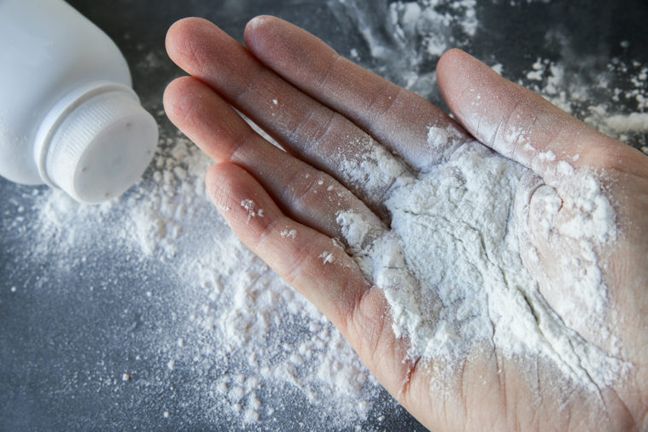In the recent past months, there have been a growing number of reports of cosmetics contaminated with asbestos. Whether ultimately accurate or not, such reports create issues relating to the manufacture and marketing of cosmetics as safe for consumers (especially teens, children, and expectant mothers). This article addresses the potential legal challenges for supply chain participants in the cosmetic industry given the increased number of cases of cosmetics contaminated with asbestos.
Talc and Asbestos
Talc, also known as talcum powder or magnesium silicate, is a naturally occurring silicate mineral mined from underground deposits. Because talc is the softest mineral known, it has been used in the manufacturing of cosmetics for years. Unfortunately, in its natural form, talc can form together with asbestos, which is another naturally occurring silicate mineral. Unfortunately, asbestos is a well known carcinogen. The U.S. Food and Drug Administration (“FDA”) has acknowledged the potential for cross-contamination of talc with asbestos. The FDA advises supply chain participants to take caution in selecting mining sites and to purify talc to prevent asbestos contamination in cosmetic products.
Contamination Becomes a Concern
In March 2019, the FDA advised consumers not to use certain cosmetics sold by Claire’s Stores, Inc. and Justice. Among the products which tested positive for asbestos were certain Claire’s brand eye shadows, compact powders and contour palettes, all of which were found to contain talc.
The FDA’s announce came a little less than a year after a St. Louis jury ordered Johnson & Johnson to pay $4.69 billion in a lawsuit arising out of allegations of cancer caused by contaminated talc. That finding, the sixth largest product-defect verdict in U.S. history, was achieved by plaintiffs who claimed that the company’s talcum products caused them to develop ovarian cancer.
At present day, over 14,000 plaintiffs have initiated lawsuits against manufacturers and suppliers of talc products. Plaintiffs in the lawsuits allege that talc products cause ovarian cancer, particularly when applied by women to the genital region, or when contaminated with asbestos, allegedly causing mesothelioma.
Potential Liability for Asbestos-Contaminated Cosmetics
Given the growing number of recent verdicts and FDA pronouncements, which have attracted significant media attention, there are risks associated with manufacturing and distributing cosmetics which could potentially be contaminated with asbestos. Since March 2019 alone, jurors in state courts in California and New York have awarded over $50 million in damages to plaintiffs in cases based on alleged talc contamination, claiming that defendant manufacturers knew about potential asbestos-contamination but failed to warn consumers.
Some of the awards mentioned above have been overturned on appeal and criticized as excessive or lacking a reasonable and rational basis. Appeal of some verdicts are pending, however, several juries in California, New Jersey, and most recently South Carolina, decided that the talc products in issue were not contaminated and not responsible for plaintiffs’ cancer. Some key issues have emerged from the several recent trials involving asbestos-contaminated products.
a. Causation and Credibility Issues
Significant questions exist as to whether plaintiffs can establish causation through credible scientific evidence, and if so, which entity bears responsibility.
On October 20, 2017, Los Angeles Superior Court Judge Maren Nelson set aside a $472 million verdict in favor of a plaintiff who alleged that talc products caused her ovarian cancer. Although the jury found that the defendants failed to warn about the safety risks of its products, Judge Nelson granted their motions for judgment notwithstanding the verdict.
Judge Nelson concluded that “the Court is of the firm conclusion that the evidence of specific causation is not sufficient to support the verdict” because the plaintiffs failed to show that “talc ‘more probably than not’ causes cancer.” Nelson found that at best, the plaintiff demonstrated merely “an ongoing debate in the scientific and medical community about whether talc more probably than not causes ovarian cancer and thus (gives) rise to a duty to warn,” which was insufficient to sustain the jury’s imposition of liability. Additionally, Judge Nelson held that failure-to-warn allegations could not be sustained against the defendant parent company where its wholly-owned consumer subsidiary had manufactured and distributed the products at issue since 1967 and documents failed to show that the parent “kept responsibility” for the products.
Significantly, this California decision did not involve allegations of asbestos contamination — rather, the plaintiff alleged that her decades of cosmetic talc use caused cancer — a link that even the FDA disputes. However, even where plaintiffs have alleged that asbestos-contaminated talc caused cancer, questions remain as to whether a plaintiff can demonstrate that he or she was exposed to asbestos via the defendant’s product.
b. Claims May Go Beyond Products Liability
The increase in talc-related litigation illustrates potential risks to supply chain members — particularly publicly traded members — from non-consumer plaintiffs far beyond the products liability context, or plaintiffs who are attempting to sidestep obstacles posed by products liability claims. These risks include claims brought by a supply chain member’s shareholder for alleged misstatements and/or omissions of material facts regarding the potential for asbestos contamination, or the alleged breach of fiduciary duties. These risks can extend potential liability beyond product manufacturers, and entangle suppliers of potentially-contaminated talc.
Conclusion
Supply chain participants should be aware of the growing risks of supplying and manufacturing products containing potentially-contaminated talc, particularly given the rising litigious climate. As these cases continue to develop, it is important for supply chain participants to remain up to speed on current legal developments and scientific literature regarding contamination at particular sites from which talc or other materials are supplied, as well as the credibility of asbestos testing methods and any potential links between asbestos contamination and cancer.

 Author: Rachel Donnelly
Author: Rachel Donnelly
 Cannabis Workers Allege Quota to Trim 4 Pounds a Day Violates the California Labor Code
Cannabis Workers Allege Quota to Trim 4 Pounds a Day Violates the California Labor Code
 The Ninth Circuit Reminds Us: Every Word Matters
The Ninth Circuit Reminds Us: Every Word Matters
 NO WAY, PRO SE! The Consequences of Abusing the Judicial System as a Pro Se Litigant in Colorado
NO WAY, PRO SE! The Consequences of Abusing the Judicial System as a Pro Se Litigant in Colorado
 Victim of Financial Mismanagement or Unlawful Retaliation? New Jersey City University Program Founder Claims School Retaliated After Reporting Alleged Sexual Harassment
Victim of Financial Mismanagement or Unlawful Retaliation? New Jersey City University Program Founder Claims School Retaliated After Reporting Alleged Sexual Harassment
 “Real Housewives” Gets a Reality Check
“Real Housewives” Gets a Reality Check
 Missing a Chapter: Insufficiency of Expert Deposition Testimony in Medical Malpractice Litigation
Missing a Chapter: Insufficiency of Expert Deposition Testimony in Medical Malpractice Litigation
 Crash Course: Why Summary Judgment Misses the Mark in Illinois Multi-Cause Limousine Crash Collision
Crash Course: Why Summary Judgment Misses the Mark in Illinois Multi-Cause Limousine Crash Collision
 Bitter Truths: Lead, Cadmium, and Defective Pleadings in California Chocolate Class Action
Bitter Truths: Lead, Cadmium, and Defective Pleadings in California Chocolate Class Action
 The Law of Unintended Consequences: Including Insurance Brokers in Litigation Strategy Communication May Waive the Attorney-Client Privilege
The Law of Unintended Consequences: Including Insurance Brokers in Litigation Strategy Communication May Waive the Attorney-Client Privilege
 You Poetic, Noble Land Mermaid: A Celebration of “Galentine’s Day”
You Poetic, Noble Land Mermaid: A Celebration of “Galentine’s Day”
 A Tell-All Article on Written Discovery Objections
A Tell-All Article on Written Discovery Objections
 The Wave of Recent COVID-19 Litigation and Trends to Watch For
The Wave of Recent COVID-19 Litigation and Trends to Watch For
 How to Avoid Appearing as a Cat and Other Helpful Virtual Deposition Tips
How to Avoid Appearing as a Cat and Other Helpful Virtual Deposition Tips
 California Court Refuses to Reduce a $9.25 Million Award
California Court Refuses to Reduce a $9.25 Million Award
 Discovery of Litigation Funding Documents
Discovery of Litigation Funding Documents
 Autonomous Vehicle Legislation
Autonomous Vehicle Legislation
 Recent Discovery in Injuries Stemming from “Vaping”
Recent Discovery in Injuries Stemming from “Vaping”